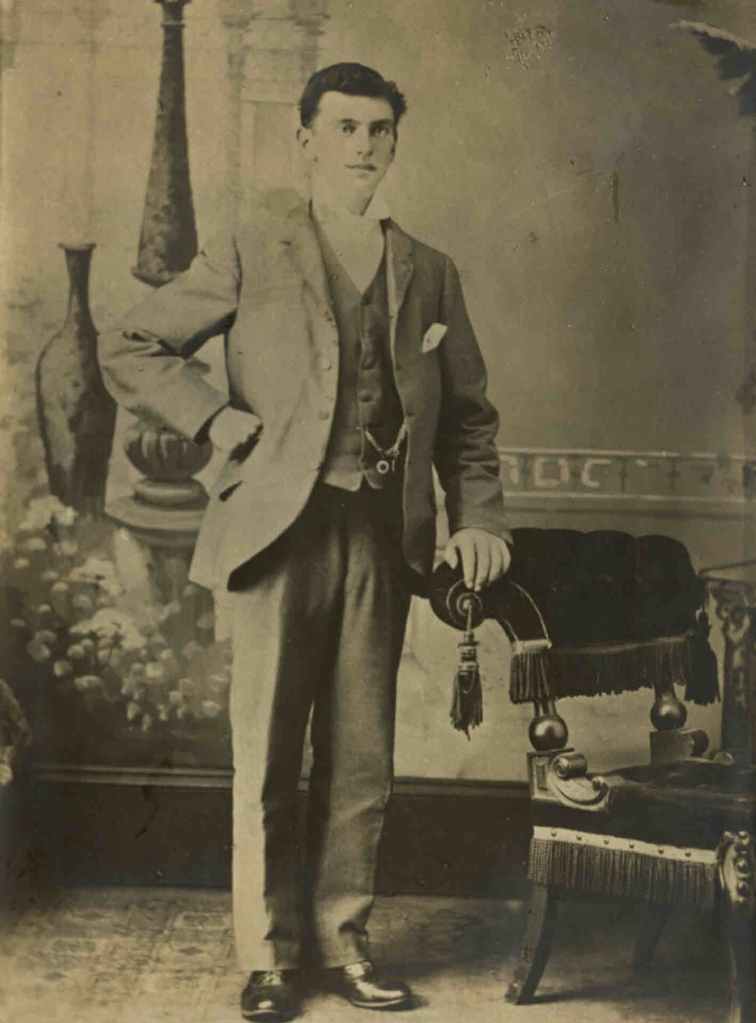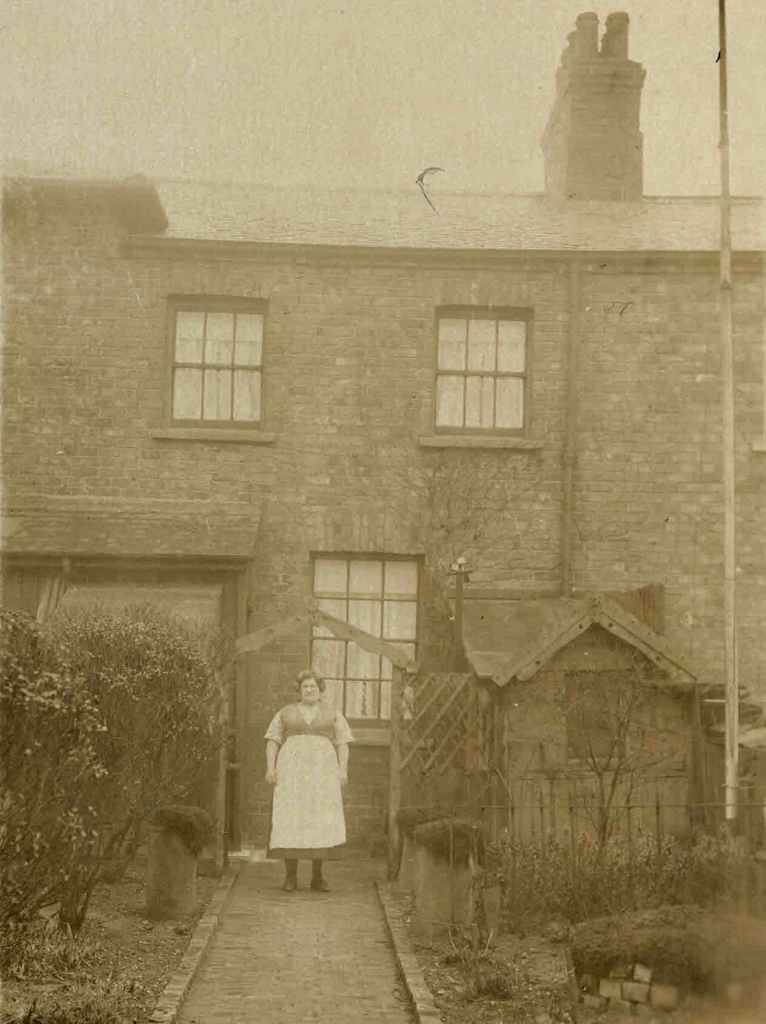Written by Chris Corbett, Community Engagement Officer, Teesside Archives
Image reference; U/WGB/20 Portrait of William Gileard Brown taken in 1912
I try not to return to a collection when looking for potential blog topics as I want to use these articles to show the breadth and diversity of material that the archives hold, from the well-known to the obscure but no less important. However, an invitation to speak at the weekly meeting of the Guisborough Retired Men’s Forum at the start of October gave me the perfect opportunity to revisit a man whose life story has become a bit of an obsession of mine, Mr William Gileard Brown. I am sure that there is the potential for at least a book from the wealth of information that his collection holds and so, to do it justice, I plan to write a 2-part blog and hope that your patience holds out!

I first stumbled upon his remarkable collection, holding beautifully handwritten memoir volumes, photographs, letters, invitations and more, when researching the impressive 7 foot high eagle lectern that he crafted in memory of the 82 men from Haverton Hill and Port Clarence who lost their lives during World War 1. This article came out on Armistice Day in November 2020 and can be found here; https://teessidearchives.wordpress.com/2020/11/11/armistice-day/
I could see from the broader contents of the collection that this was a unique story, one that extended beyond William’s extraordinary feat of craftsmanship to commemorate the loss of so many local men. To have it recorded in such detail and by his own hand, a story of a working class man who dedicated his life to public service and bettering the lives of others despite a limited education, gave me the opportunity to give him back his voice. I hope that the readers of these blogs may help me answer some of the many questions I still have, 2 years on from that wonderful initial discovery!
William’s story begins with his birth, in June 1874, the second child of Edward and Mary Jane Brown (nee Gileard), and named after his grandfathers. Edward Brown was a member of the Royal Artillery, billeted in Edinburgh Castle at one stage, but he contracted rheumatic fever, which led to his own mother buying him out of the army. He was able to find work initially as a platelayer for North East Railways and later as a railway bridgeman and the family lived in a railway cottage in Acaster Malbis, near Selby. It was a happy if financially challenged childhood, there were 9 children in the Brown family eventually and the eldest boys took on paper rounds to bring in extra cash. They also gleaned spilt corn from the fields at harvest time, to feed and bed their pigs and, foraged hedgerow brambles and other fruits in season. William’s father was an accomplished craftsman, building man of war ship models which won prizes at the York Exhibition, creating a wooden framed bicycle that was still working in 1923 and even made a 16 person wooden boat, which they took out on the Ouse and which was built in partnership with a Mr Bartram.
Life was busy with a house full of children and another on the way when Edward Brown died suddenly in 1886 when William was only 12 years of age. The loss of the main breadwinner threw the family in to disarray and in an effort to avoid the workhouse and despite a collection made by Edward’s railway colleagues, the family was split up. The older children went to local Brown and Blue Coate schools, sponsored by wealthy benefactors, his oldest brother being sent the furthest, to the General Gordon Home of Boys in Surrey while William went to live on his Uncle William’s farm at Barlby. William was always looking for opportunities to improve his lot, often borrowing a local man’s pony to help him carry the feed while he checked the farm livestock early in the morning and returning it to the stable before the owner had even woken up! Eventually, he was able to return to the family home and found work at the age of 14 on the railways, sometimes starting in the early hours and not finishing until 7 or 8 at night and surviving largely on jam and dripping on bread. My own son is 16 and I can’t imagine him having to get up at 4.30am to start a full day of hard physical graft! William did manage to find light relief in the form of woodwork, having inherited his father’s love for and skill with wood. A work colleague would bring scraps of teak, mahogany and oak from the carriage building factory in York, which he would transform in to fancy carved boxes. When at last William’s eldest brother Earnest was able to return to the family home, the joyful reunion after 4 years of separation from his family is recorded in the memoir with much affection and things seemed to be on the up for the family at large. However, when William’s mother remarried, the 2 eldest boys refused to accept their new step father as head of the household and left the family home for good.

This permanent split did have one positive result in that it may have contributed to William meeting Mary Elizabeth, a lodger with another relative and who was to become his wife and soulmate on 8th October 1894. The pictures from the memoir of the couple, taken just before their wedding, are wonderfully evocative though sadly there doesn’t seem to be a picture of their actual wedding day in the collection.

Mary and William wasted no time in starting a family of their own, with Florence born in 1896, William junior in 1898, James in 1899 and Rhoda in 1902. It was around this time that business in the Selby railway network started to decline and wage cuts were looming. With 4 young children to feed and clothe, William scouted around for a different job and this is how he came to arrive at 7, Railway Cottages, Port Clarence in 1907, with £2 in his pocket and 50 stone of potatoes from his gardens to sustain them! Starting out as a mineral guard, William progressed to a yard foreman role at Port Clarence and eventually retired in December 1935 as the yard inspector, not a bad career path for somebody who left school very young.

He tells a lovely story about how he would take the older children with him for rides in the goods van (not something that today’s health and safety regulations would allow!) but little Rhoda was too young to join in. As a way of doing something special for her so she didn’t feel left out, William made sure he picked a posy of seasonal flowers and grasses to bring home every evening, a gesture that I think speaks volumes about the man. While there are few photos of the children when they were young, there are a couple of photos of the youngest two on their respective wedding days, Rhoda marrying John Verrill and Lawrence (born after their move to Port Clarence) marrying Edith.

And so the family’s long association with the Port Clarence community began and William threw himself in to public life as much as he possibly could. The childhood poverty that he’d experienced was key in driving him to help others and provide opportunities and solutions in times of crisis. He joined his local church, St John’s at Haverton Hill (the churchyard and lych gate are still there but the church was sadly demolished in the 1970’s), to help find a place in the local community and began a lifetime of positive action in response to local need. There is an image in the collection which always makes me smile when I see it, namely that of William and his two eldest boys, James and William, dressed for the church choir, which they joined in 1912, and looking so incredibly serious! William also became a church sidesman and joined the Church of England Men’s Society; churches were true community hubs and the source of everyone’s social life at this time.

He soon put his woodcraft skills to good use in his new home, creating toys such as cradles, forts, castles and cots that he handed out to the church Sunday school children dressed as Father Christmas! It was a poor church serving a working class congregation and he fund raised tirelessly, creating wooden collection boxes placed around the village and helping to furnish the church with bookcases and an eagle desk-top lectern, a forerunner perhaps of the World War One memorial lectern. He talks about ‘my purpose in life, to meet the needs of the suffering humanity’ something he believed in deeply and that was to be the compass of his entire life.

It’s difficult to know when to pause but I think this is as good a place as any to leave the story; I’ll hopefully see you in the next blog!


Love the story of this man, looking forward to the next episode.
Any news on the ‘you know what’ Chris?
LikeLike
Me too, one of my favourite collections, always something new to discover but no news as yet about the lost eagle! Or the aged person’s playpen!!
LikeLike